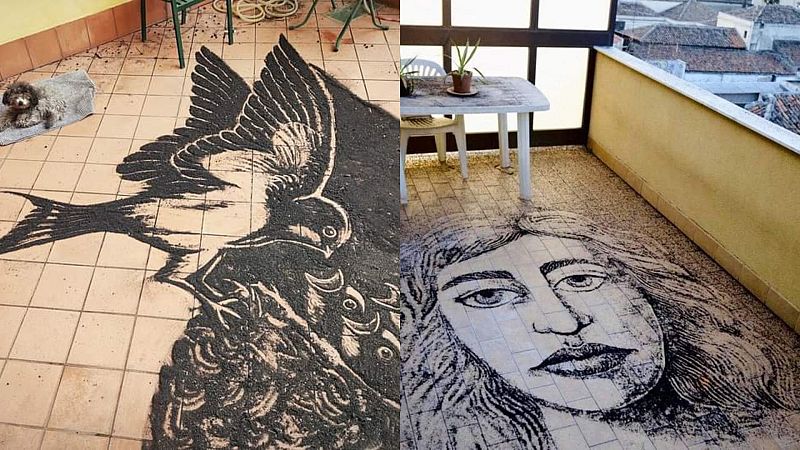The Eruption of Mount Etna and the Emergence of Artistic Innovation
Mount Etna, located on the Italian island of Sicily, experienced a significant eruption last weekend, sending towering lava fountains into the sky and producing thick clouds of ash and smoke. As Europe’s largest active volcano and one of the most active in the world, Mount Etna has been in a heightened state of activity for the past five years. This ongoing volcanic activity presents daily challenges for the residents of nearby cities and towns, who constantly deal with layers of black ash that settle on streets, vehicles, terraces, and gardens.
Many people spend hours cleaning up the dust, but some have found a unique way to transform this inconvenience into an opportunity for creativity. The idea of using Etna’s ash as a medium for artistic expression has gained popularity among local artists, leading to the creation of striking terrace artworks that have captured attention both locally and globally.
Terraces Transformed into Canvas
A few years ago, some residents began arranging the ash on their terraces into intricate designs. These creations quickly went viral on social media and were featured in Italian news outlets. One notable example is the work of artist Angelika Antonella Finocchio from Catania, who turned the ash into a large face with wide eyes and wavy hair. She expressed her sentiment about the ash, saying, “It seemed like a shame to clean it up. Every time I see a bit of ash, I think of all the images that can be produced.”
Another viral post showcased the Sicilian symbol known as the Trinacria, featuring the head of Medusa at its center with three bent legs extending outward. The post highlighted how the eruption’s fallout had been transformed into a spectacular piece of art. Similarly, Sicilian artist Giulia Pulvirenti created a delicate image of a mother swallow feeding her chicks, while Daniela Marino paid tribute to Catania’s patron saint, St Agatha, by crafting a symbolic representation of the figure.
Artists Using Volcanic Ash as a Medium
Beyond temporary installations, some local artists have taken their use of Etna’s ash further by creating permanent artworks. Giusy Mintendi, for instance, combines ash and lapilli (small volcanic rocks) into her paintings, resulting in richly textured pieces she calls ‘pittoscultura.’ She collects ash from her garden and asks friends to bring her more, while for larger stones, she visits the volcano itself. Her works often depict Mount Etna in action, spewing lava and smoke.
“I am Sicilian, my land nourishes me,” she said in an interview with Italian website Il Vulcanico. “My works of art are made with the lava ash of the Etna volcano. I am like the magma in continuous transformation.”
Catania-born artist Giusy Trovato also started experimenting with the black dust that covered her home. She now sells drawings made from Etna’s ash, featuring Sicilian subjects such as St Agatha or depictions of male and female Moors’ heads.
A Creative Response to Natural Disasters
The emergence of these artistic expressions highlights a unique way in which communities respond to natural challenges. Instead of merely viewing the ash as a nuisance, many have embraced it as a source of inspiration. This creative approach not only transforms a difficult situation into something beautiful but also fosters a deeper connection between the people of Sicily and their environment.
The story of Mount Etna’s eruptions and the art it inspires serves as a powerful reminder: when life gives you ash, make ash-tounding art.







